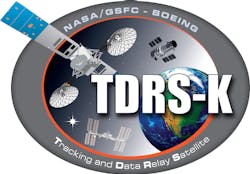Boeing TDRS-K sends first signals from space following launch
CAPE CANAVERAL, Fla., 31 Jan. 2013. Boeing (NYSE:BA) staffers received the first on-orbit signals from the Tracking and Data Relay Satellite (TDRS)-K.
Receipt of the on-orbit signals indicates that the vehicle is functional and ready to use its internal engine, which will boost the spacecraft to its operational geosynchronous orbit. Upon reaching final orbit, the third-generation TDRS-K will undergo three months of testing and calibration before NASA puts it into operation.
TDRS-K is designed to provide critical communications relay services to NASA and other U.S. space programs.
TDRS-K joins three other Boeing TDRS satellites in NASA's system. It is the first TDRS in the third generation, which delivers improved payload, power, and propulsion to help provide users with enhanced, reliable communications bandwidth at lower cost than previous systems.
"TDRS-K is another example of the vital space communication services Boeing has been providing to NASA for more than four decades," says Craig Cooning, vice president and general manager of Boeing Space & Intelligence Systems.
The satellite launched on a United Launch Alliance Atlas V vehicle at 8:48 p.m. Eastern Time from Cape Canaveral Air Force Station, Fla. Controllers in Australia confirmed initial contact with TDRS-K two hours and three minutes later.
TDRS-K's design is based on electronics from the 702 class of satellites and previous TDRS spacecraft.
